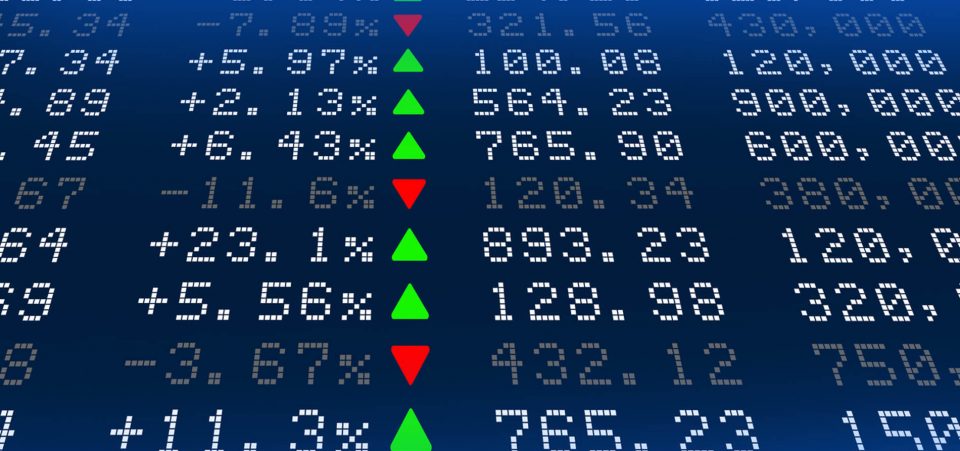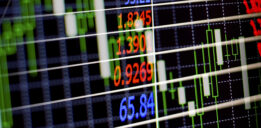Is the Stock Market Overvalued in 2017?
That stock market valuations appear rich is a given. Pundits of all types admit it—from the doomsayers to sophisticated fund managers of all classes. Stock market overvalued 2017 has even caused the collapse of long-lasting, respectable value funds, which have been around for decades. It’s done the same for countless portfolios across America. Absolutely no one argues that the idea of a stock market undervalued 2017 is even remotely sensible.
And what’s even more harrowing for investors: some fund managers have shut down because nothing makes sense anymore.
Take, for instance, the $1.5 billion Nevsky Capital Long/Short Global Equity Fund, which shut down in early 2016. This had nothing to do with performance; the fund returned a cumulative 6406% return on capital since inception in 1995 (although 2014 and 2015 yielded flat returns). This was about the founder’s inability to read, or even trust, market data anymore. (Source: “Why $1.5 Billion Nevsky Capital Is Shutting Down: The Full Letter,” Zero Hedge, January 5, 2016.)
Also Read: Stock Market Crash 2017? This Could Trigger a Stock Market Collapse
For instance, in its closing letter to investors, the fund cited global trends had begun to “militate against these pre-conditions for successful fundamental investing.” These were separated in several categories, but a couple, in particular, caught our eye: the relapse of transparency in the market and fat tail risk. Both are mutually intertwined and worthy of your attention.
After all, what really makes a market anymore? After changes in regulations following the Great Financial Crisis, the role of market making has largely given way to algorithmic trading. This has led to a situation where even a bad order can create an outsized market event on its own; similar to that first falling domino, which eventually causes the thousandth one to crash.
In a world dominated by extreme inter-connectedness and index chasing, illogical asset correlations have remained in place long after they’ve ceased to be logical. This is causing value and fundamental investors fits, because the old rules no longer apply. What difference does the price-to-earnings ratio or earnings-per-share make when the unworthy equity rises relentlessly due to its correlation to the sector leader? The result has been moribund equity market volumes and a sharp increase in individual stock volatility.
That ties in to the next big area of concern: fat tail risk. If it can be a primary cause for a multi-billion dollar hedge fund to shut down, it certainly can do the same for an undercapitalized, garden-variety portfolio. And there’s no shortage of devastating stock market predictions 2017 which can play out.
Take, for instance, the very real possibility of a Chinese hard landing. The Chief Economist at Swiss Reinsurance, Kurt Karl, seems this possibility is significant. “So far (the government) has done fine, but we do have a 20 percent chance of a hard landing.” (Source: “China faces 20 pct chance of a hard landing, says Swiss Re,” CNBC, August 31, 2016.)
Considering all the reports of over-inflated growth, threats of U.S. import tariffs, a sharp increase on tensions in the South China Sea et al, this assessment doesn’t seem so implausible. Keep in mind, this is only one potential black swan scenario. What would Kurt Karl prescribe overall market risk if he accounted for every black swan risk on his radar screen?
There’s also another black swan risk that everyone discounts because it’s constantly under our noses: a stock market overvalued by any rational metric. While not really a black swan per se, since it’s pervasive and well known, it’s nonetheless the type of risk which means nothing until it means everything. Once the raging torrent of water spills over the dyke, everyone in its path downstream gets decimated. It’s a prime factor in the Wall Street Crash 1929, even if valuations then were lower than those of today.
Price-to-Earnings Valuations, S&P 500 (Since 2000)
| Date | Value |
|---|---|
| 2017 | 25.54 |
| 2016 | 22.18 |
| 2015 | 20.02 |
| 2014 | 18.15 |
| 2013 | 17.03 |
| 2012 | 14.87 |
| 2011 | 16.30 |
| 2010 | 20.70 |
| 2009 | 70.91 |
| 2008 | 21.46 |
| 2007 | 17.36 |
| 2006 | 18.07 |
| 2005 | 19.99 |
| 2004 | 22.73 |
| 2003 | 31.43 |
| 2002 | 46.17 |
| 2001 | 27.55 |
| 2000 | 29.04 |
(Source: S&P 500 PE Ratio by Year, multpl.com)
At what number does the dyke burst? That’s the trillion-dollar question on everyone’s mind. Currently, the average P/E ratio for the S&P is 26.6—over 75% higher than its historical average. Does the market jump shark at 28? 30? 35? Some well-renowned experts predict a stock market collapse is coming, regardless of the pie-in-the-sky valuation, which seemingly rises infinitely.

Credits: Flickr.com/geralt
Is the Stock Market Overvalued or Undervalued?
What are undervalued or overvalued stocks in today’s market climate? The lines are seemingly more blurred now than ever before. Is an insurance company trading at 18 times earnings expensive nowadays? How about a Mexican grill house—Chipotle Mexican Grill, Inc. (NYSE:CMG)—trading at a P/E ratio of 523 and forward P/E of 50? These kind of dislocations often occur at market tops, breaking down the will and discipline of even the most ardent fundamental investors.
Also Read: The Upcoming Economic Recession in 2017 Has Already Begun
Unless you believe the laws of economics have metastasized, a stock market overvalued to this extreme must experience a deep correction. While the algos and their orchestrated bias drift higher have levitated the market past any point thought possible, it appears even the corporate executives are reigning in their chips.
Insiders are buying their own stock at their lowest levels in 29 years, according to those who track such metrics. There were only 279 insider buys for the entire month of January, the lowest since 1988. Selling has increased as well, pushing the ratio between buyers and selling to 1988 lows as well. (Source: “Corporate Insiders Haven’t Been This Uninterested in Buying Stocks Since Ronald Reagan Was President,” The Wall Street Journal, March 9, 2017.)
This begs the question: if corporate executives aren’t even confident purchasing their own stock, why should you be? Although insiders sell for a multitude of reasons, ranging from diversification to estate planning, executives would find the means to purchase if they were confident the shares were going higher. These factors haven’t stopped them in the past. It’s hard to fathom frothy valuations aren’t playing a primary role in the decision to forgo purchasing.
With the U.S. economic outlook 2017 fraught with risks, from free trade to high valuations and everything in between, it’s not surprising corporate executives are taking a defensive approach. Most of them didn’t achieve their status in life by becoming lemmings. They are also in the best position to understand whether corporate profits justify purchasing at such lofty levels.
Stock Market Outlook 2017
The market forecast for the next three months continues to call for low growth and low earnings, which presumably should weigh on the stock market.
With most of the S&P 500 companies already reporting earning for the fourth quarter of 2016, earnings are sitting at $106.86 cumulative. This compares to $100.45 in 2015, $113.02 in 2014, and $107.00 in 2013. In other words, earnings haven’t gone anywhere in three years. Despite the glaringly obvious fact, the S&P 500 closed 2013 at 1848.36 and is currently trading over 500 points higher. (Source: “2017 S&P 500 Operating Earnings Outlook: Estimates Lowered,” See It Market, February 22, 2017.)
The cause as you might imagine, is valuation expansion. The correlations keeping asset class prices tightly bound have not been broken, hence the upwards drift continues. In other words, the algorithmic “black boxes” holding assets prices together on declining volume have not been “triggered” to sell en masse. But what happens when the normalcy bias disappears, and algos stop defending the bid? We’ve seen the kind of devastation that can occur.
Analysis done to determine the cause of the August 24, 2015 flash crash, which sent the Dow Jones Industrial Average careening 1,100 points in the first five minutes of trade, is a testament of the devastation that can occur when tight correlated markets freak out. J.P. Morgan analyst Marko Kolanovic studied the event, and concluded that “price insensitive” programs might cause repeated sell-offs. (Source: “What happened during the Aug 24 ‘flash crash’,” CNBC, September 25, 2015.)
In other words, the market liquidity completely dried up, causing the market cascade lower. No doubt some buy-side algos sniffed out the unusual amount of selling, and lifted their bid support completely. But the troubling part is that instead of defending the bid, like the market makers of the past, they simply shut down. What happens when the valuation threshold point gets exceeded, and a spark ignites the kerosene? Are you confident that the liquidity will be there to save your portfolio?
In times like these, it seems prudent that the best offense is a good defense. That generally means the opposite of what’s worked so well the past eight years: sell the bid, increase allocation of precious metals and alternative currencies. We currently exist in a climate where anything can happen at any time. With everyone pushed all-in on risky assets over the past eight years, who will be left to save the market when the next conflagration starts?
It won’t be the algos, with the stock market overvalued at record proportions. Trust them at your own peril.






